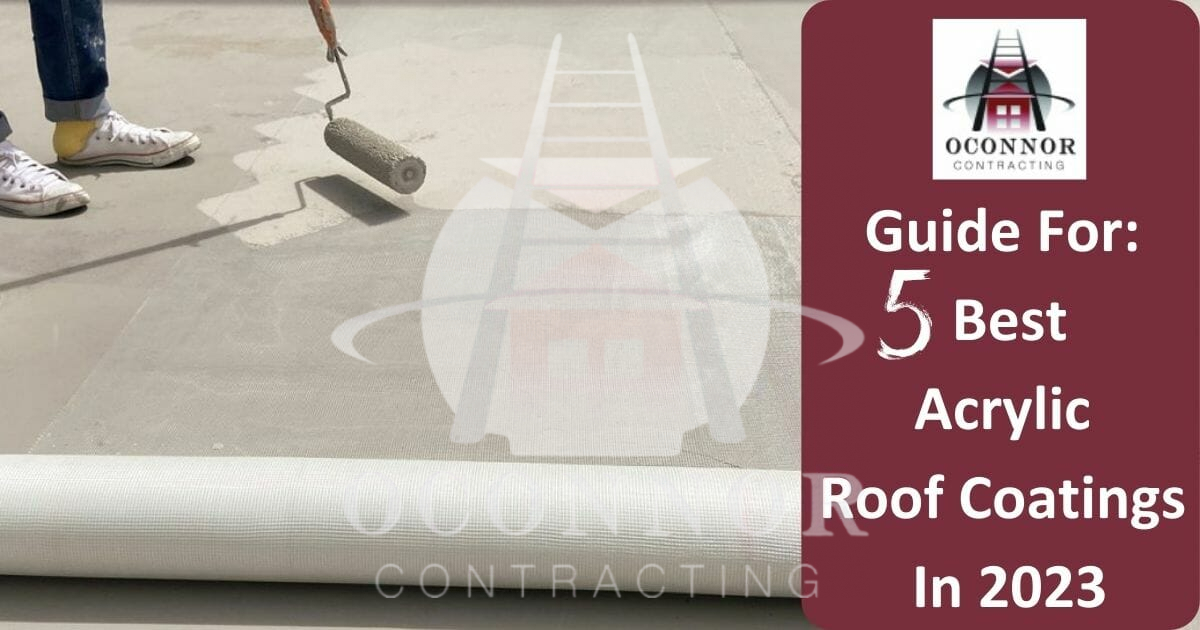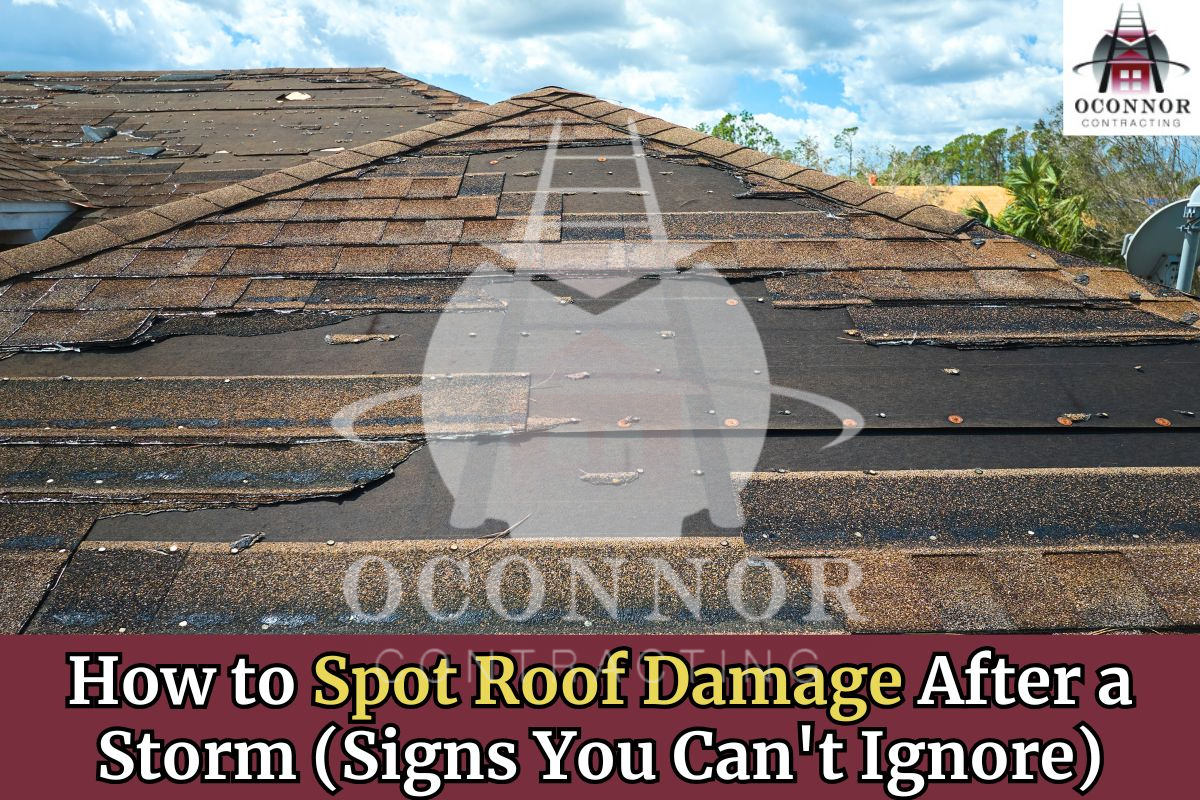
Siding is a crucial aspect of your home. But similar to the other components, it is not invincible. Siding is a house’s first line of defense, and it faces the harshest weather conditions. Though many things can damage your home siding, today we will be focusing on one of the most common cause: water.
Water damage can be a silent threat, causing long-term issues if not addressed promptly. As a seasoned roofing company serving Western New York, we’ve seen it all, and today, we will guide you through the signs of water damage on siding and how to prevent it.
Signs Your Siding Has Been Damaged by Water
If you notice any of the following signs, it’s crucial to address them right away to prevent further damage.
Peeling Paint
Peeling paint and unsightly stains are early signs that water might be causing trouble for your siding. While painting your side is not essential, it is still a good idea as it gives the material an extra layer of protection. But with time or during heavy rains, the paint can get affected.
When water gets into the material, it can make the paint lose its grip, leading to discoloration. When the paint starts to peel, your home siding is exposed and becomes more vulnerable to damage.
Watch out for these visual hints – they’re like early warning signals. If you spot them, you can nip the issue in the bud before it becomes a bigger problem. Regularly checking the paint, especially after storms, keeps your siding in top condition and your home protected.
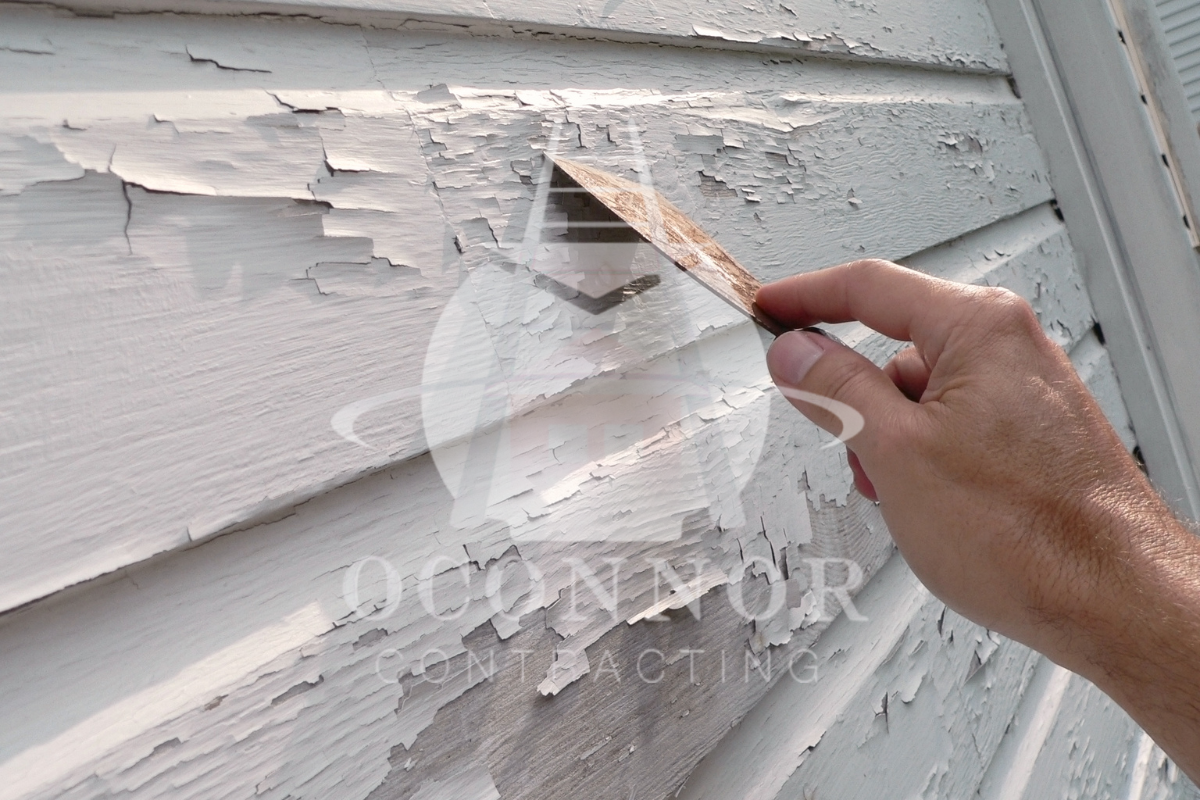
Mold Growth
When water sneaks into the hidden corners of your siding, it creates the perfect breeding ground for mold and mildew. You might have heard about these unwelcome guests damaging the curb appeal of your asphalt shingles, but they can call your siding home too.
Mold and mildew thrive in damp environments, and your siding, once it lets in water, provides just that. The most common signs are green or black spots on the material or a musty smell.
Mold and mildew usually do not physically damage your siding, but have an effect on its appearance. Apart from aesthetics, mold also raises a red flag for potential health risks to your family. It can trigger allergies and respiratory issues, making it crucial to address the issue immediately.
How To Address Mold Growth:
Taking action at the first sight of these spots is your best defense. Start by identifying the source of the water intrusion and fixing it. Then, clean the affected area thoroughly, using mold-killing solutions if needed. Remember, the key is not just to get rid of what’s visible but also to prevent it from coming back. Mold and mildew growth may be stealthy, but your vigilance can take care of the problem.
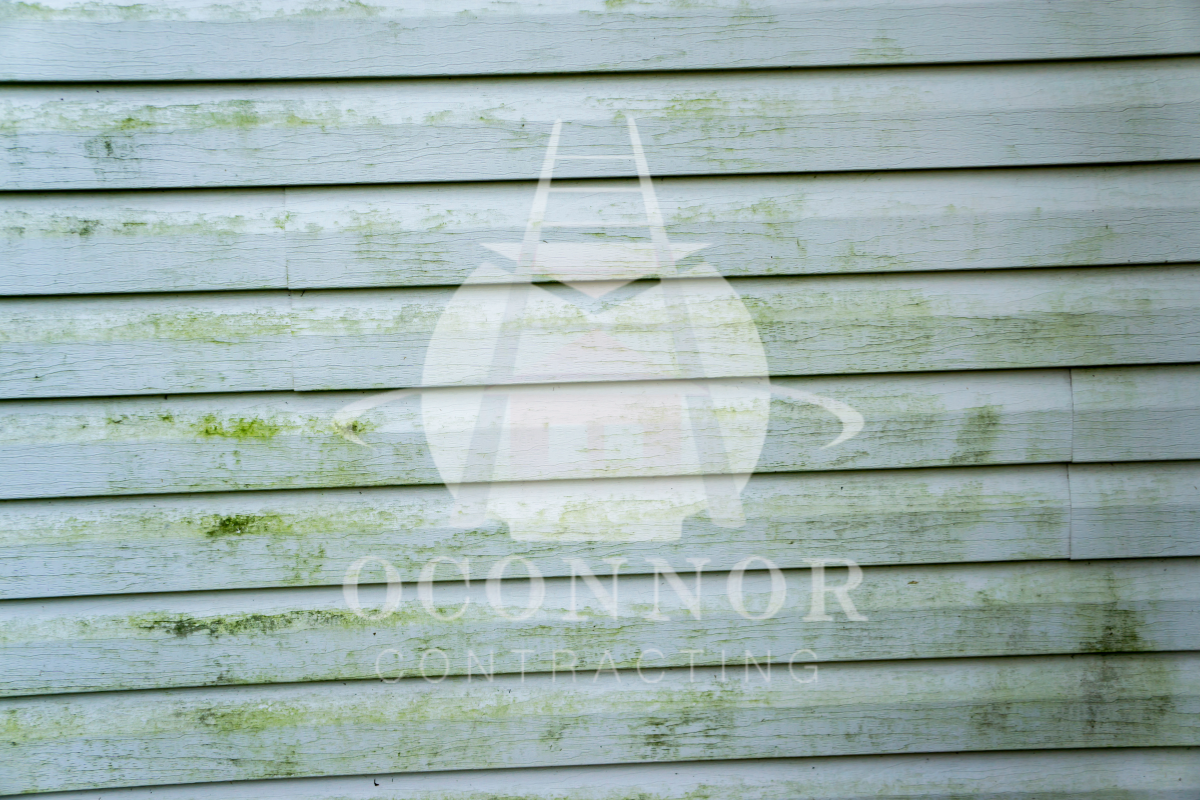
Warping or Buckling of Your Siding
Another way water can damage your house siding is it can cause the panels to buckle. When water seeps into your siding, it can wreak havoc on the structural integrity of the panels. Warped or buckled siding panels can disrupt the look of your home, and they are a common issue homeowners may face, irrespective of the type of siding you have.
The siding panels, once waterlogged, lose their original shape, creating unsightly irregularities that are hard to ignore.
How To Know If You Have Warped Siding:
To detect this issue, a simple visual inspection is all it takes. Run your eyes along the surface of your siding, paying close attention to any deviations from the norm. These could be subtle warps or noticeable buckles that stand out against the once uniform exterior.
Now, addressing this issue early on can save you from extensive and costly siding repairs in the future. Buckled or a warped siding means that the water has already made its way inside, so the longer you delay the higher the chances are that you will face severe issues in the future. Timely intervention can prevent the issue from escalating, ensuring that your siding remains intact.
So, keep a vigilant eye, and when irregularities surface, tackle them immediately to preserve the beauty and stability of your home.
Wood Rot
Wood siding is one of the most popular types of siding in not only New York, but across the country. Both wood roof shingles and siding have an exceptional curb appeal that can give your property a charming, rustic look. But this material can come with its own share of issues.
When water takes hold, it can spell trouble for the integrity of the wood. A simple test can reveal the extent of the damage – press your fingers against the siding. If the wood feels unnaturally soft or spongy, it’s a telltale sign that rot has set in. You can also look for brown or stains on your siding.
This softness indicates that the wood fibers are weak and the structural strength of the siding is compromised. This is why routine maintenance is of the utmost importance. The key here is quick replacement or repair to prevent the decay from spreading.
Also Read: Top 6 Fake Wood Siding Options That Redefine Elegance!
High Energy Bills
Until now we have discussed the signs that you can see on the siding itself, but they go beyond what is visible. It might seem unexpected, but water-damaged siding has a more far-reaching impact than just the appearance of your home. It can silently damage your home’s insulation, affecting your utility bills. Here’s how: when water infiltrates the siding, it can compromise the effectiveness of the insulation within your walls.
Insulation is crucial for your home, working diligently to keep the indoor temperature comfortable and the home energy-efficient. However, water damage behind vinyl or wood siding can disrupt this balance. The dampness weakens the insulation, reducing its ability to regulate the temperature effectively. This, in turn, can cause your heating or cooling systems to work harder to maintain the desired indoor climate.
However you should know that if you see a sudden spike in your utility bills, it is not necessarily due to water damage, there could be other factors too.
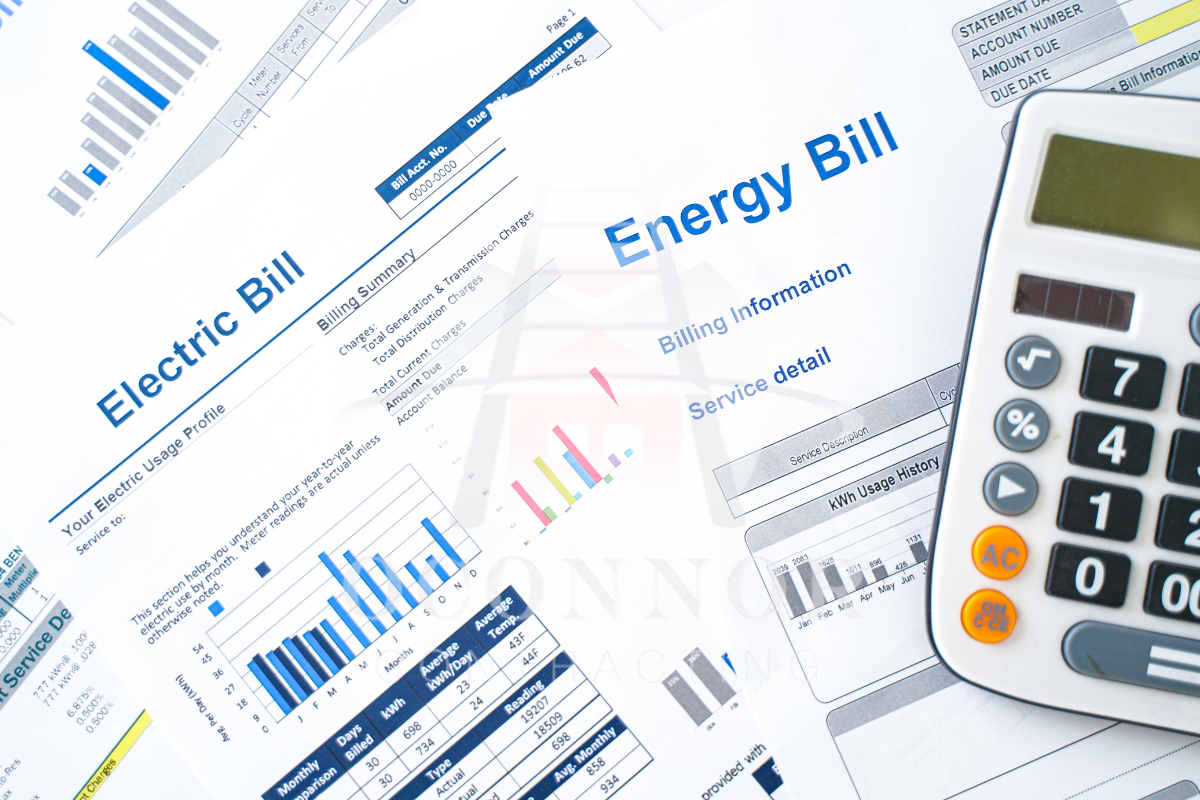
How to Prevent Water Damage on Siding
Now that you’re aware of the signs of a water damaged siding, let’s delve into proactive measures to safeguard your home.
Regular Inspections
Scheduled inspections are your first line of defense. Conduct a thorough examination of your siding at least twice a year, paying attention to vulnerable areas such as corners and joints.
Proactive Siding Repairs
Address any siding issues immediately. Whether it’s a small crack or a loose panel, taking action as soon as you know about the problem can prevent water from seeping in and causing further damage.
Ensure Proper Drainage
Ensure that your home’s drainage system is in top-notch condition. Clean gutters regularly, and make sure downspouts direct water away from your siding.
If you want to install new gutters, check out our list of recommended contractors for seamless gutter installation.
Seal Gaps and Cracks
Tiny gaps and cracks may seem inconspicuous, but they can be an entry point for water. Seal them with high-quality caulk to maintain the integrity of your siding.
Invest in Quality Siding Material
Choosing the right siding material is paramount. Opt for materials that are resistant to water damage and require less maintenance, such as vinyl siding or fiber cement. These materials also offer durability and longevity.
Best Siding Installation Services In WNY
In most cases, water gets inside your siding and causes damage due to improper installation. If you are looking to install or replace your home’s siding, it’s best to hire a contractor that has experience and expertise for the job.
At OConnor Contracting, we have a team of siding contractors that are experts in repairing and replacing different types of siding. Whether you are dealing with siding with water damage or any other issue, we can help! Contact us today at (716) 600-7663.

